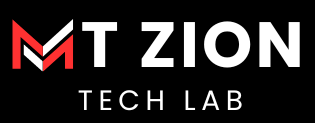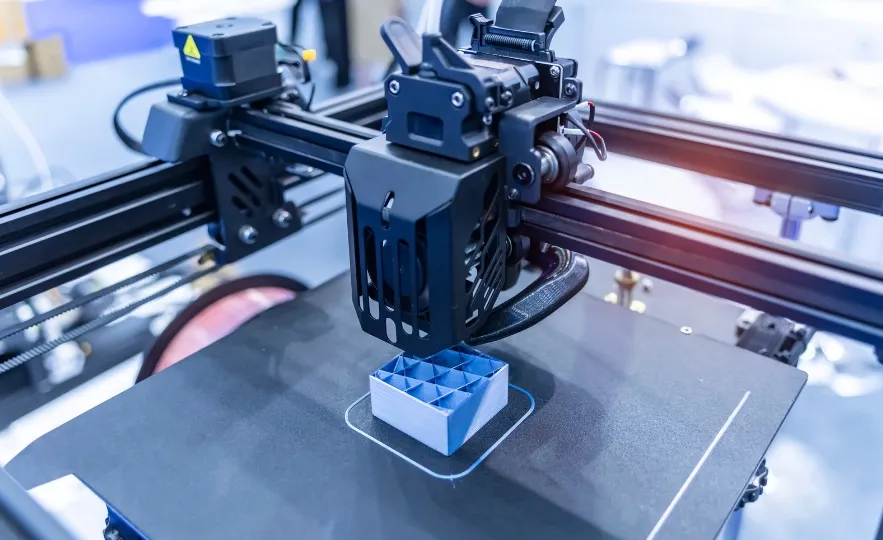The world of manufacturing and design is undergoing a profound transformation, thanks to the rapid advancements in 3D printing technology. What was once limited to prototype development has now evolved into a cutting-edge tool reshaping entire industries. From aerospace and automotive to healthcare and consumer goods, 3D printing offers unprecedented opportunities for customization, speed, and cost-efficiency. In this blog, we will explore how 3D printing is revolutionizing manufacturing and design, providing new opportunities for innovation and efficiency in various sectors.
The Evolution of 3D Printing
A Brief History of 3D Printing
3D printing, also known as additive manufacturing, has its origins in the 1980s. Initially, it was used for rapid prototyping, where engineers could quickly create physical models of their designs. The first-ever 3D printer, developed by Charles Hull in 1984, used a process called stereolithography (SLA), which converts liquid materials into solid objects through light exposure.
While early 3D printers were slow, expensive, and limited to small-scale projects, continuous advancements in the technology have led to more affordable and versatile machines. The introduction of new materials and processes has expanded 3D printing’s capabilities, making it accessible to a wider range of industries.
Key Milestones in 3D Printing Technology
- 1984: Charles Hull invents stereolithography (SLA), the first 3D printing process.
- 1999: Organ printing advancements allow for the creation of synthetic human organs, leading to life-saving medical procedures.
- 2009: Fused deposition modeling (FDM) patents expire, allowing for a boom in consumer-grade 3D printers.
- 2020: Metal 3D printing becomes a major player in industries like aerospace and automotive, producing complex components at a fraction of the cost.
How 3D Printing Works
The 3D Printing Process
At its core, 3D printing involves building an object layer by layer using various materials, such as plastics, metals, ceramics, or composites. This process contrasts with traditional manufacturing, which often involves subtracting material (cutting or drilling) from a larger block.
Steps Involved in 3D Printing:
- Design: A digital model is created using CAD (Computer-Aided Design) software.
- Slicing: The model is “sliced” into thin layers, preparing it for printing.
- Printing: The printer deposits material layer by layer until the object is complete.
- Post-Processing: The final product may require additional steps, such as polishing or painting.
Types of 3D Printing Technologies
Several 3D printing technologies exist today, each suited to specific applications:
- Stereolithography (SLA): Uses a laser to harden liquid resin into a solid object.
- Fused Deposition Modeling (FDM): Melts thermoplastic filaments and extrudes them layer by layer.
- Selective Laser Sintering (SLS): Uses a laser to fuse powdered materials like nylon or metal.
- Direct Metal Laser Sintering (DMLS): Ideal for metal parts, DMLS builds objects by sintering metal powder with a laser.
The Impact of 3D Printing on Manufacturing
Cost Efficiency & Reduced Waste
One of the most significant advantages of 3D printing in manufacturing is cost efficiency. Traditional manufacturing processes, such as CNC machining, often involve significant material waste as parts are carved out of larger pieces of material. With 3D printing, material is only used where necessary, significantly reducing waste and costs.
Additionally, 3D printing eliminates the need for expensive molds or tooling, allowing companies to produce small batches of custom parts without the overhead typically associated with mass production. This makes 3D printing a cost-effective solution for both prototyping and full-scale production.
Customization & Personalization
3D printing has made it possible to produce highly customized products at scale, which was previously unthinkable with traditional manufacturing methods. This level of customization is particularly valuable in industries such as healthcare, where prosthetics, dental implants, and surgical tools can be tailored to individual patients’ needs.
In the consumer market, companies like Adidas and Nike are using 3D printing to create custom footwear, offering unique designs and personalized fits for each customer.
Speed & Flexibility in Production
With 3D printing, companies can move from design to finished product in a fraction of the time it would take using traditional methods. This is especially beneficial in industries like aerospace and automotive, where time-to-market can significantly impact profitability.
Moreover, 3D printing allows for greater flexibility in production. Manufacturers can easily modify a product’s design without retooling or reprogramming equipment, allowing for rapid iteration and innovation.
Supply Chain Simplification
By enabling on-demand production, 3D printing has the potential to revolutionize supply chains. Instead of relying on global manufacturing hubs, companies can produce parts closer to their end markets, reducing shipping costs and lead times. In some cases, businesses can even eliminate the need for physical inventory, as digital files can be stored and printed only when needed.
3D Printing in Design
Enhancing Creative Freedom
For designers, 3D printing has unlocked new levels of creative freedom. Traditional manufacturing often imposes design constraints due to the limitations of the machines or materials. In contrast, 3D printing allows designers to experiment with complex geometries, intricate details, and organic shapes that would be impossible to produce with traditional methods.
Rapid Prototyping & Iteration
3D printing is invaluable in the product development phase, enabling rapid prototyping and iteration. Designers can quickly create physical models of their concepts, test their functionality, and make adjustments before moving to full-scale production. This iterative process significantly reduces the time and cost associated with product development, helping companies bring better products to market faster.
Sustainable Design Practices
As sustainability becomes an increasingly important consideration in design, 3D printing offers a more eco-friendly alternative to traditional manufacturing. By minimizing waste and using sustainable materials, 3D printing aligns with the growing demand for environmentally responsible design practices.
Industries Disrupted by 3D Printing
Healthcare
3D printing has had a profound impact on the healthcare industry. Surgeons can now use 3D-printed models to plan complex surgeries, improving patient outcomes. The technology also allows for the production of customized implants, prosthetics, and even bioprinted organs, which could one day revolutionize organ transplantation.
Aerospace & Automotive
In the aerospace and automotive industries, 3D printing has enabled the production of lightweight, high-strength parts that are crucial for improving fuel efficiency and performance. Companies like Boeing and Airbus are using 3D printing to produce aircraft components, while automakers like Ford and Tesla are incorporating 3D-printed parts into their vehicles.
Consumer Goods
The consumer goods sector is also embracing 3D printing for custom products. From fashion and footwear to furniture and home decor, 3D printing enables brands to offer personalized, made-to-order items that cater to individual tastes and preferences.
The Future of 3D Printing
As 3D printing technology continues to evolve, its impact on manufacturing and design will only grow. Innovations such as multi-material printing, faster print speeds, and bioprinting are on the horizon, promising to unlock even more possibilities for the technology.
In the future, we may see 3D printing become a standard tool in every industry, from construction and architecture to food production and education. With its ability to reduce costs, increase customization, and streamline production, 3D printing is set to revolutionize the way we design and manufacture goods.
Conclusion
3D printing is no longer a niche technology reserved for prototyping or hobbyists. It is revolutionizing manufacturing and design across industries, offering unparalleled advantages in terms of cost, speed, and customization. As technology continues to advance, it will open up even more possibilities for innovation, transforming the way we create and produce goods in the years to come.
By embracing 3D printing, businesses can stay ahead of the competition, reduce their environmental footprint, and meet the growing demand for personalized, on-demand products. The future of manufacturing and design is here, and 3D printing is leading the way.

